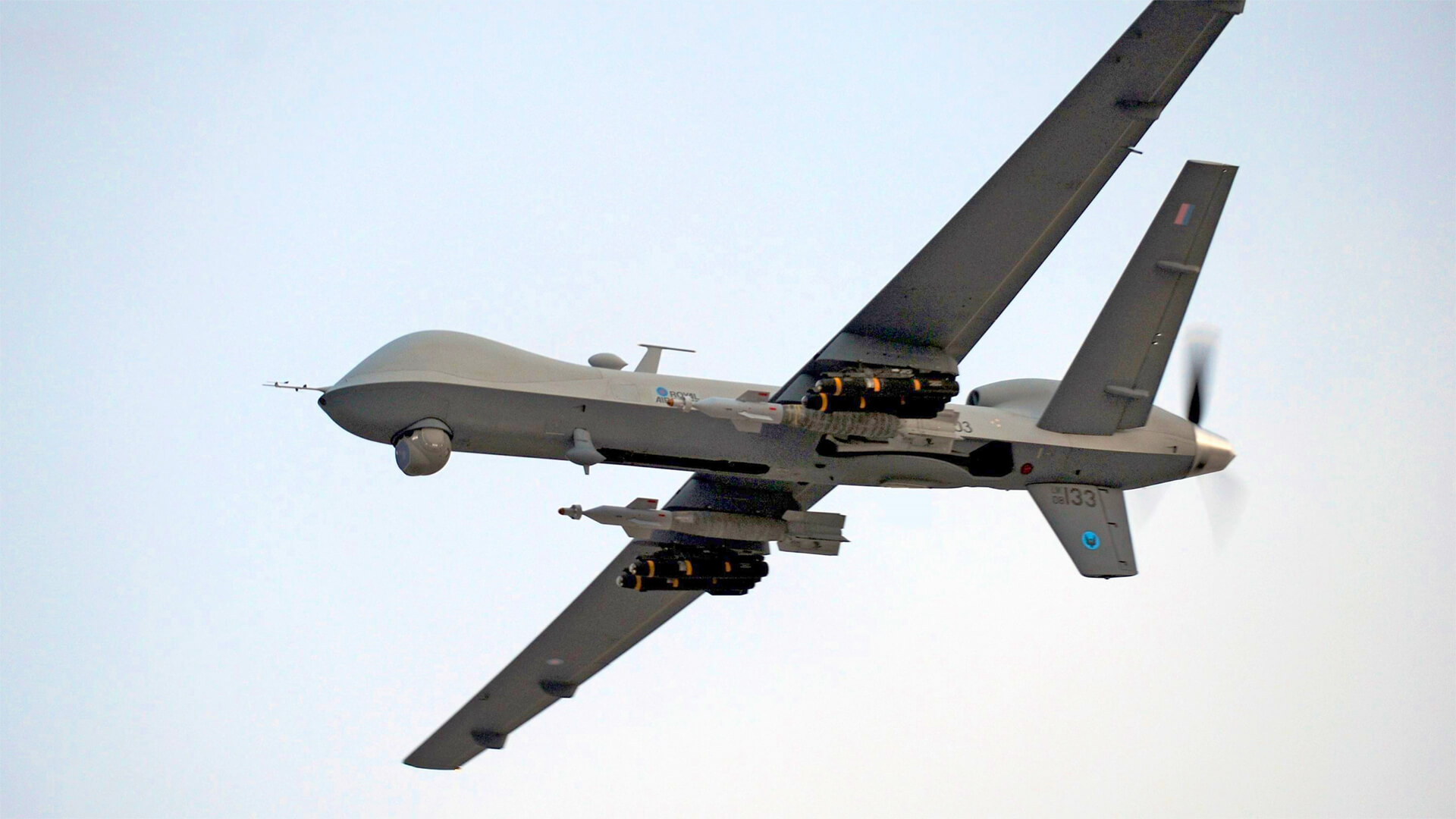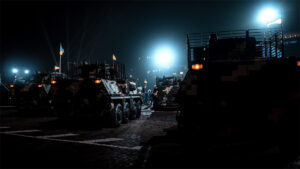Ukraine has successfully attacked several major Russian ammunition depots, with explosions detectable hundreds of miles away. These strikes suggest Ukraine’s war strategy is evolving…
There are a handful of factors contributing to the success of Ukraine’s tactics: vulnerability of Russian ammunition, Ukraine’s new missile-drone hybrid weapon and Russian rail system targeting. Combine all of these and you get a recipe for Ukrainian success.
The strategic shift we’re seeing now could pose some serious challenges for the Russians moving forward.
Here at Zeihan On Geopolitics we select a single charity to sponsor. We have two criteria:
First, we look across the world and use our skill sets to identify where the needs are most acute. Second, we look for an institution with preexisting networks for both materials gathering and aid distribution. That way we know every cent of our donation is not simply going directly to where help is needed most, but our donations serve as a force multiplier for a system already in existence. Then we give what we can.
Today, our chosen charity is a group called Medshare, which provides emergency medical services to communities in need, with a very heavy emphasis on locations facing acute crises. Medshare operates right in the thick of it. Until future notice, every cent we earn from every book we sell in every format through every retailer is going to Medshare’s Ukraine fund.
And then there’s you.
Our newsletters and videologues are not only free, they will always be free. We also will never share your contact information with anyone. All we ask is that if you find one of our releases in any way useful, that you make a donation to Medshare. Over one third of Ukraine’s pre-war population has either been forced from their homes, kidnapped and shipped to Russia, or is trying to survive in occupied lands. This is our way to help who we can. Please, join us.
Transcript
Hello, everybody. It’s Peter Zeihan coming to you from a foggy Colorado. It is the 22nd of September. In the news over the last 4 or 5 days, the Ukrainians have managed to blow up a handful of major arm depots within Russian territory, some of them a couple hundred miles from the border. The three places in question are cross-border, Tow Rope Pets, and two corvettes.
Yeah, pretty sure that’s right. Anyway, one of these explosions was big enough that it was detected by seismic monitoring stations a thousand miles away, which is cool—kind of creepy. Kiloton-range explosion. We’ve got four things going on here, all of which are pretty significant, and when you put them together, it suggests a change in the tempo of the war.
The first thing to understand is that the Russians don’t move and store ammo like normal people. They don’t use forklifts, crates, or pallets; they just have things in boxes moved by hand. So, when something goes wrong—and things often do—it’s very volatile. That’s definitely what happened at all three of these facilities.
The second development is that the Ukrainians have brought a new weapon system into play. The technical term is “drone missile,” which is a bit shy of a cruise missile. The name of this system is a letter, and I’m not going to apologize for mispronouncing it because the Ukrainians chose that name specifically because it’s difficult for the Russians to pronounce—so I’m in the clear. The NSA, anyway. Its range isn’t nearly as good as some of the drones the Ukrainians have been fielding over the course of the summer.
Some of these drones have hit targets a thousand miles from the front, but these probably have a range of no more than 300 miles. However, because it’s a missile instead of a drone, it flies much faster, is much harder to intercept, and can carry a much heavier payload. The bigger Ukrainian drones can carry warheads about 75 pounds, with most of them carrying a third of that. But these new missiles likely have warheads 2 to 5 times as large. I say “likely” because they’re new, and last week was the first time we saw them in action. That said, they’re being used in large numbers—specifically in the attack on Tow Rope Pets, which involved at least 100 of these missiles. This is not just a case of 1 or 2 missiles being launched; entire fleets are now in play. For their debut, that’s pretty impressive from a manufacturing point of view, leaving aside logistics and military planning.
The third issue is that Russia, when it moves cargo more than the final mile, usually relies on rail. Russian territory is vast, and the value of agricultural land in Russia is low. Precipitation is fickle, and the summer season is short, so the amount of income Russian land can generate for the state per square mile is very low. Of the major agricultural zones in the world, Russia’s is by far the lowest in terms of income generated.
This means the Russians can’t afford a normal transport method like having a road network that individual farmers can always access. They simply don’t have the income necessary to build or maintain such a network, so they need something more cost-effective—hence, rail. About 90% of what moves in Russia, whether it’s barrels of oil, bushels of grain, or stacks of ammo canisters, moves by rail. It’s only in the final mile that cargo is moved by hand or maybe by civilian car if it’s a military asset. This system has lots of vulnerabilities, but it’s hard to target trains because rail networks are difficult to disrupt long-term. If a rail line gets blown up, you just lay new track.
In the recent attack, it appears that a train was present, unloading ammo at the time, and it was hit, causing the entire depot to explode. I must emphasize that I’m using local Russian reporting, so take it with a grain of salt. But usually, the Russians don’t celebrate their own trains and ammo dumps getting blown up. “Celebrate” is the wrong word, but you get the point. Unless this was an amazing coincidence, it suggests the Ukrainians have found a way to track Russian rail movements in real-time.
There’s reason to think this is true because a few weeks ago, the Ukrainians attacked Russia to the north and took over large portions of the Kursk province, including a rail depot at a place called Susa. If this allowed the Ukrainians to tap into or hack the Russian rail network, they could now know the schedules and locations of Russian locomotives and what they’re carrying. If they’re carrying ammo and heading to a warehouse full of more ammo, well, that’s a target-rich environment for the Ukrainians. So, we should expect more of these kinds of attacks.
Which brings us to the fourth and final issue: a potential change in targeting. If the Ukrainians do have better intel on the rail system and now have these faster, more lethal, mass-produced missile drones, the logical next step is to target Russia’s power generation and distribution systems. Unlike in the U.S., where half of our cargo by ton-mile is moved by truck, rail is critical in Russia, and two-thirds of Russia’s locomotives are electric. If Ukraine can disrupt the electricity system, the entire Russian transport system could fall apart.
We may already be seeing early stages of this. We know the Ukrainians have used drones to attack power centers in Crimea, though it felt like a test run—there weren’t many drones involved. But if they now have better intel on rail systems and weapons to hit ammo and transport networks, we’ll likely see much more activity within 150 miles of Ukraine’s borders to the north, northeast, and east.
We’ve seen Russian counteroffensives in places like Kursk peter out in the last 72 hours, as well as in the Donbas, where Russian forces were on the verge of capturing a Ukrainian rail network at Borowski. The Russians had been making steady progress toward this goal for months, ever since they captured the fortress city of Avdiivka. They got within 5 or 6 miles of Borowski, and if they had taken it, Ukraine’s ability to move forces along the front would’ve been crippled. But the assault stopped, likely due to the kind of attacks I’ve just described.
This is bad for Russia in the short, mid, and long term. It affects their ability to reach the front, let alone supply it. Remember, the Russian military doesn’t operate on quality—it’s all about throwing huge numbers of troops and shells at the enemy and incrementally advancing. You can’t do that without a robust rail network, and the Ukrainians may have just found a way to strike at its heart.







